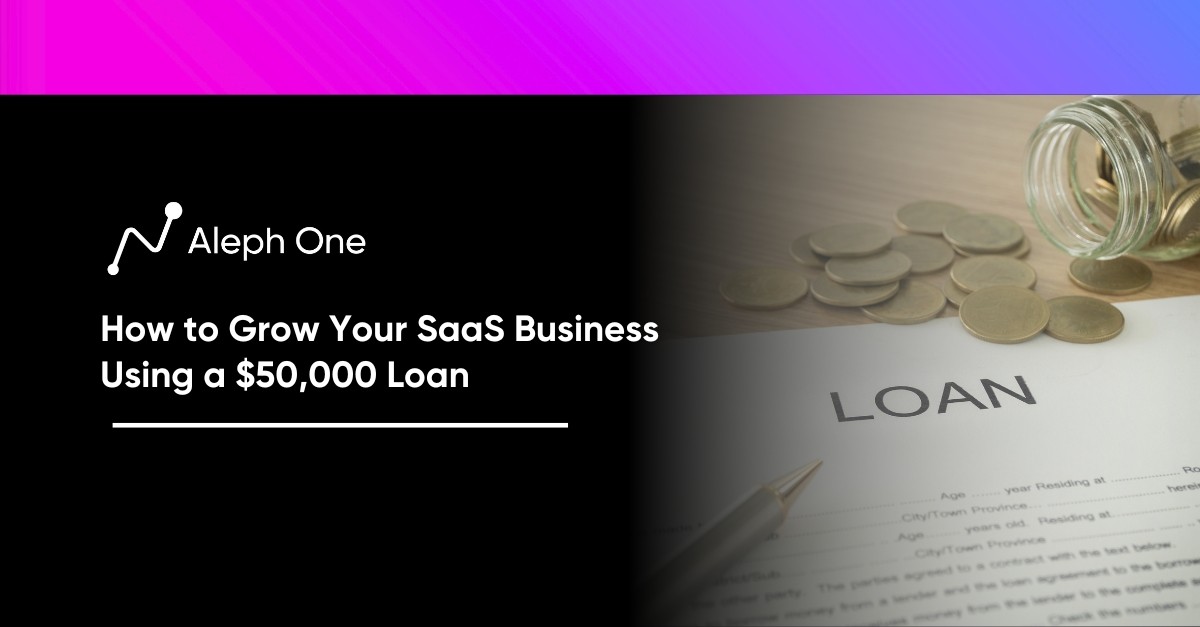Let’s work together to build something amazing. Share your project details and our team will reply to figure out the next steps to your success.

The success of software-as-a-service (SaaS) companies depends on their ability to attract and retain customers in today’s crowded market. This predicament necessitates that a deep understanding of their competitive landscape is gained. Failure to monitor competitors could ultimately lead to the collapse of a SaaS business. Many major SaaS players, such as Slack and WebEx, have failed due to competition. Obtaining actionable insights into competitors and improving the quality of their products and services could be the advantage needed to win customers in this challenging market. In this article, we highlight the importance of competitive intelligence, reveal a three-step analysis framework to gain insights, share tactics for competitive intelligence gathering, and discuss how companies can avoid the common mistakes of competitive analysis.

The Criticality of Competitive Intelligence for SaaS Success
For software-as-a-service (SaaS) companies, success depends on attracting and retaining customers. In today’s crowded market, that means understanding your competitive landscape deeply. Failure to monitor competitors and gain critical insights into their offerings, strategies, and weaknesses could spell doom for your SaaS business.
Many Major SaaS Players Failed Due to Competition
In the early 2000s, WebEx dominated the web conferencing market but ultimately lost out to Zoom and GoToMeeting. Friendster crumbled in the face of Facebook and MySpace. Slack’s growth has slowed due to competition from Microsoft Teams.
Competitors Take Your Market Share
Your competitors tirelessly lure away your customers and grab a larger market share. You’ll quickly stay caught up if you track their every move and use that information to strengthen your competitive position. Conducting competitive analysis and gaining actionable intelligence should be an ongoing priority, not a one-time exercise.
Analyzing Your Competitor is Necessary
While it may seem underhanded, spying is critical to success. You must know your competitors’ strategies, offerings, messaging, and more. Study their website, reviews, social media, and content. Set alerts to track their announcements and new features. Analyze data from tools like BuiltWith and Crunchbase to see how their technology and business evolve.
Competitive intelligence fuels critical strategic decisions and helps you identify opportunities to differentiate. It provides insights you can use to improve your product, better serve customers, and gain ground against rivals. Those with the best competitive insights will ultimately win in the battle for SaaS market share. Ignoring your competition and failing to gain that strategic knowledge could lead your once-promising SaaS business to suffer the same fate as WebEx, Friendster, and Slack. Continuous monitoring and analysis of competitors should be a top priority.
The 3-Step Process for Gaining a Competitive Advantage
To gain valuable insights into your competitors and determine an effective strategy, follow this three-step competitive analysis framework:
1. Identify Your Key Competitors
Make a list of the top 3-5 competitors that directly compete with your SaaS offering. These could be major players in your market or up-and-coming startups. Look at factors like their target customers, business models, marketing messages, and growth to determine if they are direct competitors.
2. Evaluate Their Offerings and Strategies
Conduct in-depth research into your competitors’ products, pricing, partnerships, and go-to-market strategies. Sign up for free trials of their tools and analyze their features and user experiences. Check their website content, blog posts, and press releases. See if they have strategic partnerships or key differentiators that provide a competitive advantage.
3. Determine Their Strengths and Weaknesses
Based on your analysis, pinpoint your competitors’ strengths and weaknesses. Their strengths could include innovative features, premium pricing, or a large customer base, while weaknesses may be an outdated UI, lack of mobile functionality or poor customer support. Look for any gaps or opportunities in the market that your SaaS business could take advantage of.
Leading SaaS companies like Salesforce and HubSpot have leveraged this competitive analysis framework to gain strategic insights and build a sustainable competitive advantage. By continuously analyzing competitors and the broader market landscape, your SaaS business can make informed decisions, spot new opportunities, and stay one step ahead of rivals. You need to understand your competition to avoid falling behind, losing customers, and ultimately facing significant challenges to your success and survival.
Spying on Your Rivals: How to Gather Competitive Intelligence
To gain valuable insights into your competitors, you need to conduct covert surveillance. Here are seven tactics for researching your rivals:
1. Study Their Website
Analyze your competitor’s websites to understand their offerings, positioning, and messaging. Look for any weaknesses you can capitalize on. For example, if their site is outdated or difficult to navigate, you can tout your superior user experience.
2. Monitor Their Social Media
Follow your competitors on social platforms like Twitter, Facebook, and LinkedIn to see how they engage with customers and promote their brands. Look for opportunities to differentiate your social media strategy. For instance, if they rarely respond to comments or questions, you can position yourself as being more customer-centric.
3. Set up Google Alerts
Create alerts for your competitors’ company names and essential products to get notified whenever they are mentioned on the web. This helps you stay on top of their latest partnerships, features, clients, and more. You can then adapt your strategy accordingly.
4. Check Data Tools
Use services like BuiltWith to see what technologies your rivals are using, Crunchbase to find their funding and investment details, and Owler to discover their revenue and employee numbers. These insights allow you to benchmark your progress.
5. Study Their Content
Analyze your competitors’ blog posts, ebooks, podcasts, and videos to determine their thought leadership strategies and key messaging. Look for opportunities to provide more value to your target audience. For example, if their content is product-focused, you can publish more educational content.
6. Review Their SEO
See what keywords your competitors are ranking for to identify opportunities to outrank them. Use tools like SEMrush, Ahrefs, and Moz to analyze their organic search traffic and backlinks. With this data, you can optimize your SEO strategy to gain more visibility.
7. Search For Customer Reviews
Check sites like G2 Crowd, Capterra, and Trustpilot to find reviews of your competitors from real users. Look for common complaints and weaknesses you can improve upon. These insights allow you to better position your solution based on the shortcomings of alternatives.
Leveraging these competitive intelligence tactics will give you the insights needed to gain strategic advantages, outmaneuver your rivals, and build a successful SaaS business. But be careful not to get caught up in analysis paralysis. The key is taking action on your findings and continuously adapting to stay one step ahead of the competition.
Avoiding the Common Mistakes of Competitive Analysis
One of the biggest mistakes SaaS companies make is only analyzing the major players in their market. While keeping tabs on the industry leaders is important, emerging competitors can also pose a threat. By the time their disruption is on your radar, they may have already stolen a chunk of your market share. Conduct research across the competitive landscape, not just the usual suspects.
Relying on Secondary Research
Another common error is relying too heavily on secondary research instead of gathering primary insights. While tools like Crunchbase and reports from research firms provide useful overviews, nothing beats “boots on the ground” intelligence. Talk to your customers and prospects to understand why they chose competitors over you. Sign up for free trials of rival services to experience them firsthand. These types of primary research provide invaluable context that can get missed in secondary reports.
Not Determining Competitor’s Strategies
Finally, failing to determine competitors’ future strategies leaves you vulnerable. If you only analyze competitors’ current offerings and positioning, you’ll be caught off guard when they release new features or pivot into new areas. Study the language on their website and recent hires to anticipate their direction. See if they’ve raised any funding recently which could fuel expansion into new products or markets. Try to get inside the heads of their leadership team to understand their vision for the future.
In the fast-paced world of SaaS, yesterday’s competitors may look very different tomorrow. The companies that gain lasting success are the ones that avoid the common mistakes of competitive analysis. By continuously researching across the competitive landscape, gathering primary insights, and determining future strategies, you’ll uncover key opportunities to differentiate and stay one step ahead of rivals.
Staying One Step Ahead: How to Continuously Monitor the Competition
To gain a lasting competitive advantage, you must monitor your competitors continuously, not just conduct occasional analyses. Leading SaaS companies build competitive intelligence machines that provide a constant pulse on the market. They set up automated alerts for monitoring competitors, conduct regular competitive landscape reviews, and designate teams responsible for tracking rivals.
Set Up Alerts to Stay On Top of Competitors in Real Time
Monitor company websites, news reports, social media, and review sites for updates. Use tools like Google Alerts, Buzzsumo, and Talkwalker to receive notifications when competitors are mentioned online. Review new features, partnerships, or strategies as soon as they’re announced to determine how to respond.
Schedule Recurring Competitive Reviews
Schedule recurring competitive reviews, whether monthly, quarterly, or biannually. Analyze how competitors’ offerings, marketing, customer success, and other areas have evolved. Look for trends in their growth, customer reviews, content, and search rankings. See if new competitors have emerged or existing ones have exited the market. Regular reviews allow you to spot opportunities and threats before they become urgent issues.
Designate a Team Responsible for Competitive Intelligence
Don’t leave it to a single employee or conduct analyses only when needed. Have a dedicated team to gather and analyze data on competitors and the market. They should monitor the competitive landscape and report key findings to executives. Competitive intelligence teams give SaaS companies a significant strategic advantage.
Gain Insights From Your Competition
Failing to consistently monitor competitors puts you at risk of being blindsided by new rivals, sudden changes in strategy, or other unforeseen threats. While occasional analyses provide value, only an ongoing competitive intelligence effort can fuel sustainable success in the fast-paced SaaS market. Build your competitive intelligence machine, and gain the insights needed to outmaneuver rivals and win new customers. Staying one step ahead of the competition is vital to dominating your market.
How can SaaS companies strike the balance between observing competitors while also focusing on innovation and remaining unique in their offerings?
Balancing observation and innovation necessitates a two-pronged approach. Firstly, SaaS companies should establish a dedicated team that continuously monitors the competitive landscape. This separation ensures the majority of the workforce can focus on innovation. Secondly, it is crucial for these companies to use any intelligence gathered not as a blueprint, but as a baseline for improvement. The idea is not to mimic competitors, but to understand their approach and strategize ways their own offers can be improved, and differentiated while remaining on-trend.
Can you highlight major ways through which a SaaS business can transform the insights from competitors' reviews/testimonials into practical actions that heighten competitiveness?
Transforming insights from competitors’ reviews/testimonials into practical actions requires translating the feedback into product or service improvements. For example, common complaints could highlight areas for development, while aspects of a product praised by customers could spotlight functionalities the company might want to consider. At its essence, this process involves prioritizing customer needs and demands, ensuring the company’s offering is a step above what’s already available in the market.
How can smaller SaaS companies with limited resources effectively keep up with competitive intelligence?
Smaller SaaS companies can use affordable tools and strategic partnerships to keep up with competitive intelligence. Many monitoring tools like Google Alerts and social listening tools offer free versions. Additionally, smaller companies can leverage partnerships with other businesses or influencers to gain market insight. Engaging with their active user community can also offer invaluable insights, as these users often interact with other similar SaaS companies and can provide comparative feedback.
Get the latest news and updates from Aleph One in your inbox.



